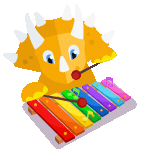From One to Many: The Amazing Journey of Creole Languages
Did you know there isn’t just one Creole? Creole languages exist all over the world, from the Caribbean to Africa to Southeast Asia. They all started in similar ways but each one is unique. For kids, it’s like unlocking a treasure chest of languages that share a family tree.
Hundreds of years ago, people from many different cultures were brought together often through colonization and trade. They needed ways to talk to one another. So they created simple, shared languages from bits of others. Over time, these “contact languages” developed into full languages called Creoles.
Each Creole has its own grammar, pronunciation, and local flavor. Some are based on French, others on English, Portuguese, or Spanish. Haitian Creole, for example, has French roots with African and Caribbean influences.
Where Are Creoles Spoken Today?
Creole languages are still spoken by millions of people today in places like:
- Haiti (Haitian Creole)
- Mauritius (Mauritian Creole)
- Seychelles (Seychellois Creole)
- Louisiana (Louisiana Creole)
- Cape Verde (Cape Verdean Creole)
Each version tells a story of how people came together—and built something new.
Learning Creole Is a Global Adventure
Creole Map Hunt
Print a world map and mark places where Creoles are spoken. Use pictures or stickers for each country.
Language Family Tree
Draw a tree and write different Creole names on the branches. Connect them back to the roots (French, English, Portuguese, etc.).
With videos, games, songs, and printable resources, Dinolingo helps kids ages 2–14 start speaking Haitian Creole with confidence. The program is available on web, iOS, and Android and supports both screen-based and offline learning.
By learning Haitian Creole, kids are joining a global story one filled with courage, culture, and creativity.
Source:
Start Learning a New Language Today!
Best Language App for Kids.
7-day free trial. Then only $19/month. Cancel anytime.
